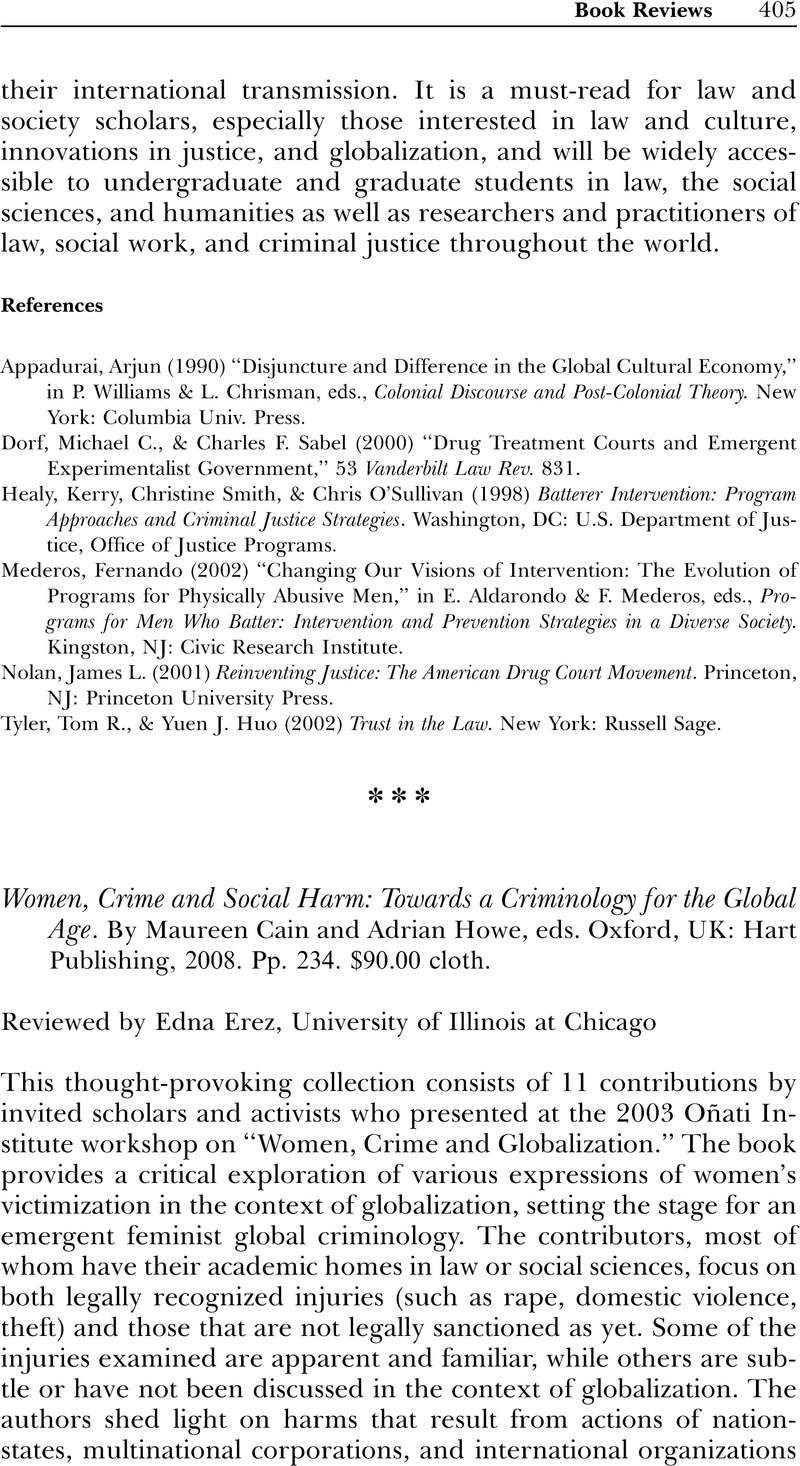No CrossRef data available.
Article contents
Women, Crime and Social Harm: Towards a Criminology for the Global Age. By Maureen Cain and Adrian Howe, eds. Oxford, UK: Hart Publishing, 2008. Pp. 234. $90.00 cloth.
Review products
Women, Crime and Social Harm: Towards a Criminology for the Global Age. By Maureen Cain and Adrian Howe, eds. Oxford, UK: Hart Publishing, 2008. Pp. 234. $90.00 cloth.
Published online by Cambridge University Press: 01 January 2024
Abstract
An abstract is not available for this content so a preview has been provided. Please use the Get access link above for information on how to access this content.

- Type
- Book Reviews
- Information
- Copyright
- © 2010 Law and Society Association.


